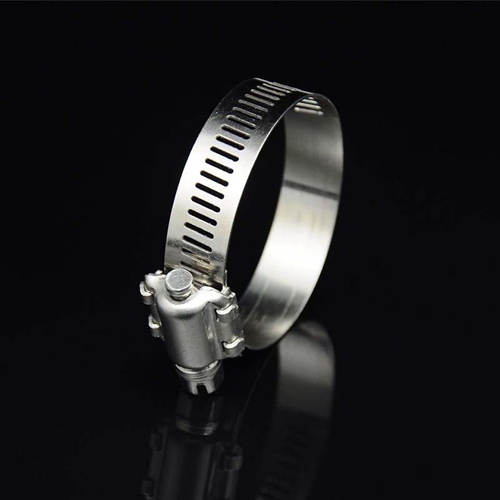- Phone:+86-17331948172 +86-0319-8862898
- E-mail: inquiry@puxingclamp.com
Oct . 15, 2024 10:42 Back to list
Manufacturers of High-Quality Blue Tempered Spring Steel Strips for Various Applications
Blue Tempered Spring Steel Strip An Overview of Manufacturing and Applications
Blue tempered spring steel strip is a specialized type of high-carbon steel strip that is commonly used in various applications due to its exceptional strength, resilience, and durability. The manufacturing process of blue tempered spring steel involves a combination of heat treatment and tempering, which imparts unique properties ideal for springs and other mechanical components. This article will delve into the factories producing blue tempered spring steel strips, highlighting the manufacturing process, quality control measures, and the applications of this versatile material.
Manufacturing Process
The production of blue tempered spring steel strip begins with the selection of high-quality raw materials, typically high-carbon steel, which offers superior hardness and tensile strength. The steel is first melted and cast into slabs or billets, which are then heated and processed through a series of operations including hot rolling, cold rolling, and annealing.
1. Hot and Cold Rolling Initially, the steel is hot-rolled to achieve the desired thickness and width. Hot rolling enables the operator to shape the steel while it is still pliable. After hot rolling, the strip undergoes cold rolling, which refines the dimensions and enhances the surface finish. Cold rolling is crucial as it increases the strength of the material through work hardening.
2. Heat Treatment Once the desired thickness is achieved, the next step involves heat treatment. The steel strips are heated to critical temperatures and then rapidly cooled in a process known as quenching. This treatment significantly increases the hardness of the steel.
3. Tempering Following quenching, the strips are subjected to a tempering process to reduce brittleness while retaining the material's hardness. This is where the 'blue' in blue tempered steel comes from—the blue color is a result of the tempered oxide layer that forms on the surface during the process. Tempering enhances the ductility of the steel, making it suitable for applications requiring both strength and flexibility.
Quality Control
Factories specializing in the production of blue tempered spring steel strip implement stringent quality control measures throughout the manufacturing process. Quality assurance begins with the careful selection of raw materials and continues through each step of production. Advanced testing techniques, such as tensile testing, hardness testing, and surface inspection, are employed to ensure that the final product meets industry standards.
blue tempered spring steel strip factories

Additionally, many manufacturers adhere to international quality standards such as ISO 9001, which ensures consistent quality management practices. Routine audits and inspections help to maintain high standards of safety and performance.
Applications
Blue tempered spring steel strips have a wide array of applications across various industries due to their remarkable properties. Some common uses include
1. Automotive Industry In vehicles, blue tempered spring steel strips are commonly employed in suspension systems, brake components, and various types of springs. Their ability to withstand high stress and fatigue makes them ideal for automotive applications where reliability and performance are crucial.
2. Manufacturing and Industrial Machinery These steel strips are frequently used in machinery components, including conveyor systems, clamps, and fasteners. Their strength and flexibility allow them to function effectively in demanding environments.
3. Consumer Products Various consumer goods, including kitchen appliances and power tools, utilize blue tempered spring steel in their design. The material's resilience ensures longevity and durability in everyday use.
4. Aerospace In the aerospace sector, where precision and reliability are paramount, blue tempered spring steel strips are used in critical components that require high-performance materials capable of withstanding extreme conditions.
Conclusion
As industries continue to seek materials that offer a combination of strength, flexibility, and durability, blue tempered spring steel strip remains a preferred choice. The manufacturing processes deployed by factories ensure that this material meets the rigorous demands of modern applications. With ongoing advancements in technology and material science, the potential for further applications and enhancements in the properties of blue tempered spring steel is promising, reinforcing its significance across various sectors.
-
Large Stainless Steel Adjustable American Type Hose Clamp - Hebei Pux Alloy Technology Co., Ltd
NewsAug.02,2025
-
Large Stainless Steel Adjustable American Type Hose Clamp - Hebei Pux Alloy Technology Co., Ltd
NewsAug.02,2025
-
Large Stainless Steel Adjustable American Type Hose Clamp-Hebei Pux Alloy Technology Co., Ltd|Corrosion Resistance, Adjustable Design
NewsAug.02,2025
-
Large Stainless Steel Adjustable American Type Hose Clamp-Hebei Pux Alloy Technology Co., Ltd|Corrosion Resistance, Adjustable Design
NewsAug.02,2025
-
High Quality Precision Stainless Steel Strip - GPT-4-Turbo Grade
NewsAug.02,2025
-
Heavy Duty Hose Clamp | Premium Durability & Security
NewsAug.01,2025




